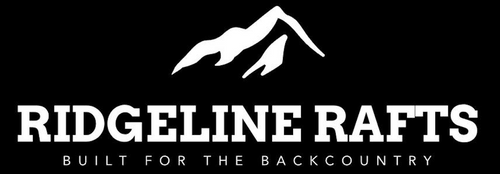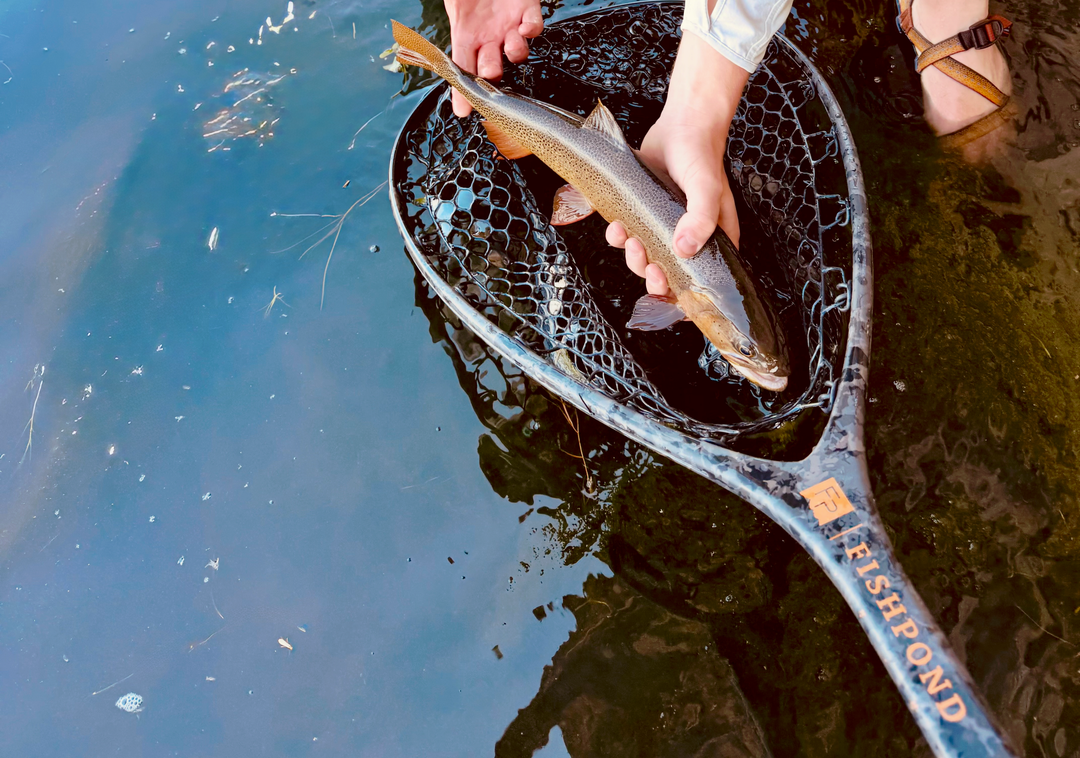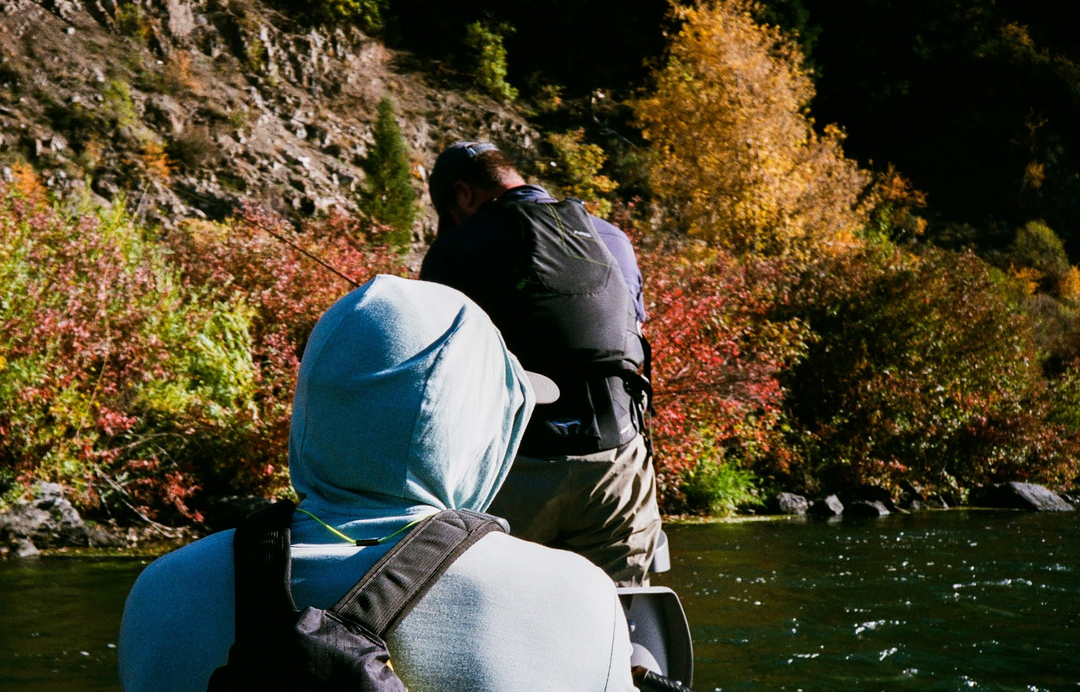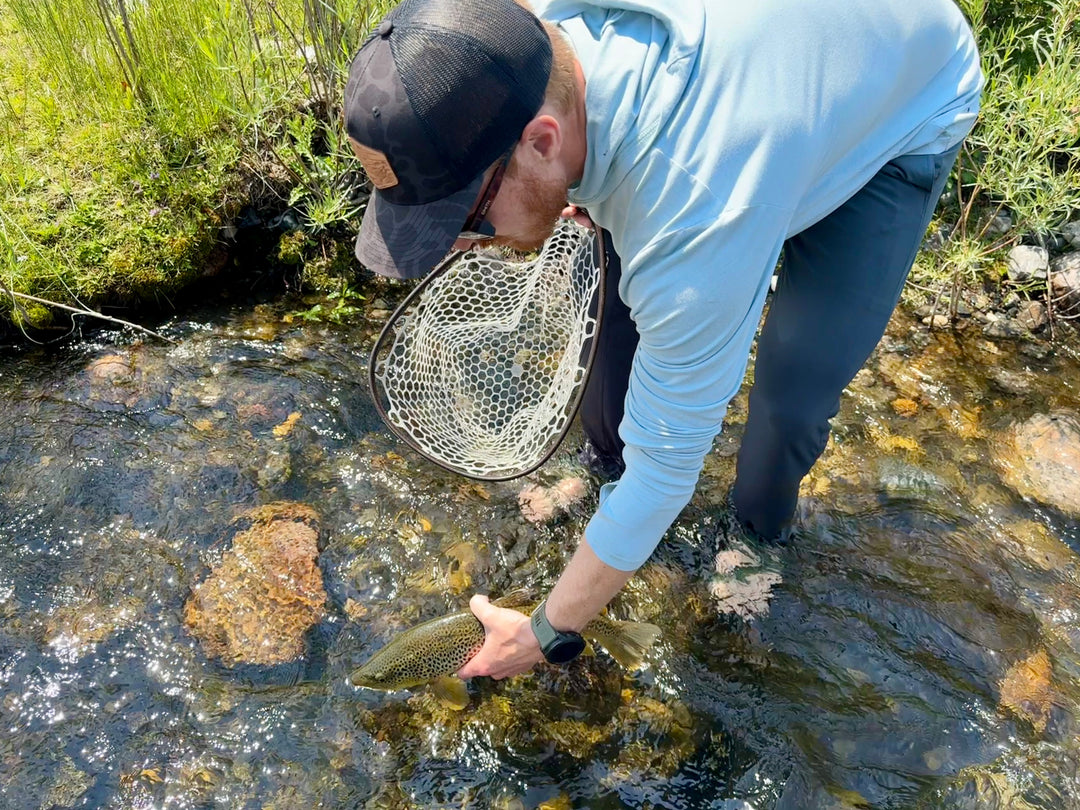Using Physics to Understand Fishing Raft Design

Why We Created Ridgeline
After rowing modern inflatable fishing boats for years, I was left wanting more. We built Ridgeline Rafts because what was on the market didn’t meet our needs. Nearly every option fell into one of two categories: skinny rafts or whitewater rafts. Both have their pros and cons, but neither really solved the problems I kept running into while fly fishing on the river.
Skinny rafts were designed for transportation to the river — not performance on the river. They often felt tippy, unstable, and not especially durable. While lightweight and portable, they sacrificed fishability for ease of transport.
On the other hand, whitewater rafts were built to charge rapids. But for the bulk of fishing rivers, they felt heavy and sluggish. Rowing them on flat water was brutal, and they struggled to make quick, precise adjustments in technical fishing situations.
We created Ridgeline Rafts to ride the fine line between modern inflatable fishing boats and larger whitewater rigs — blending the best of both worlds without sacrificing performance on either end.
If you're anything like me, you probably do copious amounts of research — especially when it comes to outdoor gear — because you want to truly understand how something works before you invest in it. That’s exactly why I wrote this article.
You can learn a lot from looking at a fishing boat’s specs — but what do those numbers actually mean in terms of how a raft performs on the water? I wanted to break down some simple physics concepts (don’t worry, it’s not too technical!) to explain why some boats row better than others, and how these differences really show up in the real world — when you're out fishing the river.
Comparing Larger and Smaller Inflatable Fishing Boats
So we're going to compare two different scenarios comparing our rafts vs larger whitewater rafts and the smaller modern fly fishing rafts and how their design impacts their performance on the river. Below are some of the basic specs of our 3 man Raft (just dimensions - were not comparing other differences like welded vs glued seams) and then some example rafts that are a bit bigger and a bit smaller.
These details may not seem like they are that big of a difference and we're splitting hairs here, but these little details have a compounding affect on the quality and performance of a raft and when you start understanding how rowing for fly fishing is very different that rowing to just get down the river it adds even more substantial weight to those details.
|
|
Ridgeline |
Larger Raft |
Smaller Raft |
|
Width (edge to edge) |
65" |
75" |
55" |
|
Length (nose to tail) |
13'6" |
14' |
14' |
|
Weight (raft only) |
85lbs |
125lbs |
100lbs |
|
Tube Diameter |
17" |
18" |
16" |
The Physics Behind Better Rowing
When comparing rafts, bigger isn’t always better — but smaller doesn’t guarantee easier rowing either. Design, not just size, dictates performance. Let’s break it down with physics.
Example comparison:
-
Ridgeline's Raft: Modern inflatable fishing raft
-
Larger Raft: Think whitewater-style raft
We’ll examine why a slightly larger raft is harder to row using four physical principles:
-
Drag
-
Friction
-
Displacement
-
Inertia
Good rowing creates more fishing opportunities, and the right raft design enhances the angler's ability to maneuver and position the boat effectively.
1. Wider = More Frontal Surface Area -> More Drag
A wider raft presents more surface area on the water. That increases form drag — the resistance to forward motion.
-
Fd = drag force
-
Cd = drag coefficient (depends on shape)
-
ρ = water density
-
A = cross-sectional area (increases with width)
-
v = velocity through water
What it means: A 10-inch increase in width increases A, so you’re pushing more water aside with each stroke. This is most noticeable when back-rowing, ferrying, or in flat water.
2. Larger Tubes = More Buoyancy, But More Wetted Surface -> More Friction
A 1-inch increase in tube diameter adds buoyancy (raft rides higher), but also increases the wetted surface area — the portion in contact with the water.
-
More surface contact = more skin friction, a secondary form of drag
-
Especially matters when rowing with gear, people, dogs, or into headwinds
Bottom line: More surface = more resistance, especially noticeable over distance or time.
3. Heavier = More Displacement -> More Water to Push Aside
Add 40 lbs to a raft, and it sits deeper in the water. This increases displacement, and with it, resistance.
Think of walking in waist-deep water vs knee-deep: more depth = harder movement.
-
More raft submerged = more wave-making resistance and friction
-
Affects maneuverability, especially during accelerations and tight moves
Fisherman looking for their first fishing boat will look at the dry weight of the boat, but forget that once you add in another two anglers, gear, dogs, and so on that weight gets even heavier.
4. Inertia: Heavier = Harder to Start, Stop, and Turn
Newton’s Second Law: F = ma
-
More mass (a heavier raft) requires more force to start moving, stop precisely, or change direction.
While heavier boats may glide (a core reason people like drift boats) slightly better once moving, they’re harder to control, especially when fine-tuning position for fishing. That’s key — because good rowing creates more fishing opportunities for your friends to hook a fish of a lifetime.
Summary: Comparing Physical Effects
|
Change |
Effect |
Result |
|
+10” width |
More frontal area |
Harder to row forward |
|
+1” tube diameter |
More surface contact |
Increased skin friction |
|
+40 lbs weight |
More displacement/inertia |
Sluggish handling and maneuvering |
Bottom Line:
A wider, heavier raft with larger tubes resists movement more at every level. Unless you need the added size for gear, you’re trading efficiency for bulk — and your shoulders will feel it.
Additionally, this size whitewater raft in this example is a pretty small whitewater raft. They can get substantially larger and the differences we discuss here will have an even larger impact on performance.
Does Bigger Always Mean Worse Performance Though?
Not always — it depends on the design.
Let’s now compare Ridgeline’s specs against a smaller 3-man raft which generally has the perception of being easier to row.
|
|
Ridgeline |
Smaller Raft |
|
Width (edge to edge) |
65" |
55" |
|
Length (nose to tail) |
13'6" |
14' |
|
Weight (raft only) |
85lbs |
100lbs |
|
Tube Diameter |
17" |
16" |
Despite being slightly larger, Ridgeline is still the best boat for fly fishing — here’s why:
1. Weight-to-Width Efficiency
Even at a wider stance, our raft is 15+ lbs lighter than many smaller model boats.
-
Less mass = less force needed to accelerate or turn
-
Especially important when crab rowing to hold a line or making quick adjustment to the other side of the river to position anglers to hit a pocket behind a boulder
-
2. Tube Size Improves Buoyancy and Oar Geometry
Ridgeline:
-
17” tubes = higher ride, less drag, drier experience
-
They also raise the oarlocks, giving the rower better mechanical advantage
Smaller tubes:
-
Sit lower = more drag
-
Place oars lower = less leverage and power
3. Wider = Better Oar Leverage
-
10” of additional width improves oar arc and leverage
-
Easier to apply power and control stroke angle
Crab Rowing
This is another subtle difference that you don't think about unless you're pretty familiar with rowing, but crab rowing (ferrying, sculling - it goes by many names) is a lot harder to do when the oar towers are 10" closer together.
When your oar towers are closer together, your oars are working in a narrower arc, meaning:
-
You have less leverage (shorter moment arm).
-
The angle of force applied to the water is more inward than outward.
-
Your strokes become more vertical and less lateral — which is inefficient for sideways movement.
Crab rowing — or ferrying — requires lateral movement across current. To do that, your oars need to push water in a sideways direction, not just backward. You lose that ability when your towers are too close.
Think of it Like a Wrench
Imagine using a wrench with your hands 12 inches apart versus only 2 inches apart. Which is easier?
-
More distance = more torque.
The same concept applies with oars. Wider spacing gives you more torque on the boat with each stroke.
-
Increases stroke arc: You get a wider sweep in the water.
-
Improves stroke angle: You can direct force more sideways (ideal for ferrying/crab rowing).
-
Boosts power: You apply more force with less effort.
-
Gives control: Especially critical in wind, current seams, or when positioning for a cast.
When towers are too close (Narrower boats):
-
Force tighter oar setups
-
Reduce stroke efficiency
-
You end up “punching” water rather than “levering” the boat across the current.
-
Often require shorter oars or awkward mechanics
-
-
It feels harder to initiate lateral motion.
4. Raft Shape
Narrow, but long rafts:
-
Turn slower when fully loaded
-
Sit deeper per pound, creating more drag
Storage
Another area that long and skinny boats struggle with is storage. Because there isn't a lot of room most of the gear, dry bags, and coolers gets stacked up onto the rear on a gear rack. It's great there are fewer possibilities for your fly line to snag on your equipment, but this puts so much weight on the rear of the raft that it makes it the boat do a wheelie your entire float. These lightweight and versatile boats really suffer in moving water after you get them off your car, truck or trailer.
5. Urethane Coating = Less Hull Friction
This is a bonus one, but it's worth adding (again - details matter). Our rafts have a Urethane coating on them which is smoother than bare PVC.
-
Reduces skin friction
-
Glides easier, especially noticeable in flat water or wind
-
Keeps rowing feel crisp over long distances
Final Comparison Table
|
Feature |
Ridgeline |
Skinner Option |
Why Ridgeline Rows Better |
|
Raft Weight |
85 lbs |
100+ lbs |
Less inertia, easier maneuvering |
|
Width |
65” |
56” |
Better oar leverage |
|
Tube Size |
17” |
15” |
More buoyancy, higher ride |
|
Coating |
Urethane |
PVC |
Lower hull friction |
Why Ridgeline Rafts Are the Best Inflatable Fishing Boats

While many boats are built specifically for storage or transport, Ridgeline is designed for performance on the water — where it actually counts. With the right mix of tube size, raft shape, width, weight, and coatings, Ridgeline gives you:
-
More glide per stroke
-
More control in current
-
Less fatigue after long days
Backed by boring physics — and built for better fishing.
Why are Ridgeline Rafts the best boats? They are built to help anglers catch more fish—plain and simple. With a stable, lighter weight platform that’s still highly portable (easy to carry, pack, and store), these boats give you access to remote waters where fish see fewer flies and pressure. Whether you're navigating swift current, dodging logs, or easing through tight channels, Ridgeline gives you confidence and control on any adventure.
Our rafts are the most versatile boat on the market—ideal for getting you off shore for fun solo missions, trips with a buddy, or spending time with the family and kids. Features like a stable drop-stitch floor (perfect for standing or sitting), lean bars to help you stand up and fish, and modular frames let you customize your setup exactly how you like it.
And durability? Ridgeline Rafts are built to last. In fact, our warranty is more than three times longer than most other rafts on the market—because quality matters when you're this far from the truck. We've got you covered.
From Montana to Tennessee, Colorado to New Mexico—and anywhere in between—Ridgeline opens up endless fishing opportunities.




